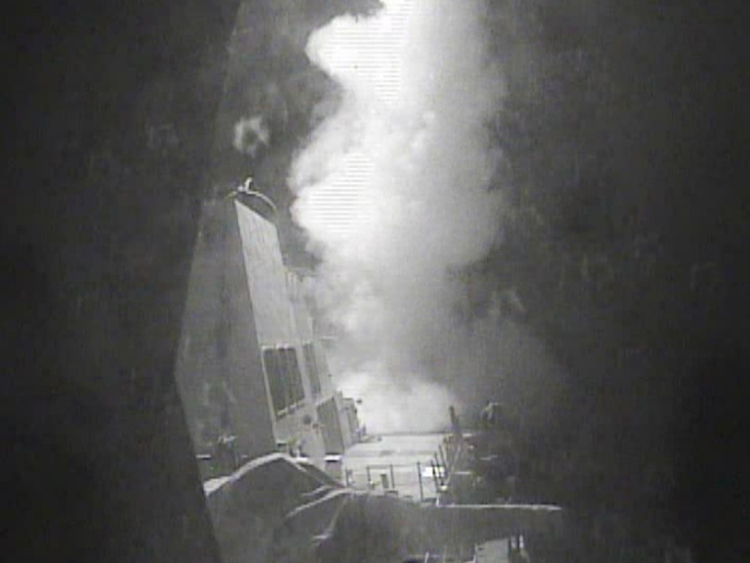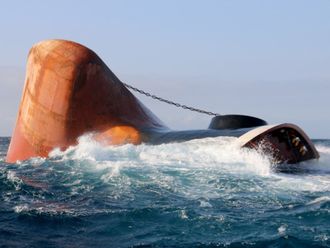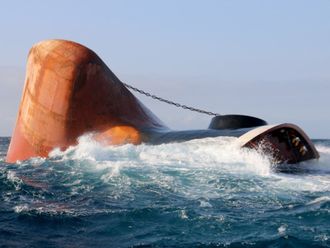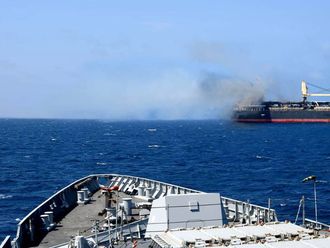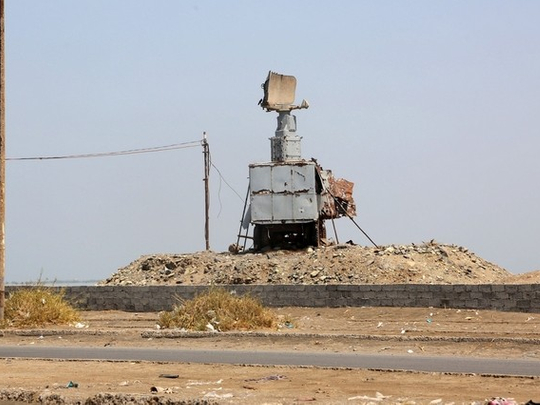
Washington: A US warship stationed off the coast of Yemen fired cruise missiles on Thursday at radar installations that the Pentagon said had been used by Iran-backed Al Houthi rebels to target another US warship in two missile attacks in the past four days.
The strikes against Al Houthi rebels marked the first time the United States had become involved militarily in the civil war between Al Houthis, and the Yemeni government, which is backed by Saudi Arabia and other Arab states.
Al Houthi rebels on Thursday denied US accusations they had targeted a US destroyer in the Red Sea which prompted cruise missile strikes on three radar sites under their control.
The strikes were approved by President Barack Obama, said Peter Cook, the Pentagon spokesman, who warned of more to come if US ships were fired upon again.
“These limited self-defence strikes were conducted to protect our personnel, our ships and our freedom of navigation in this important maritime passageway,” the Pentagon said in a statement. “The United States will respond to any further threat to our ships and commercial traffic.”
Until Thursday, the Obama administration had been trying to navigate a treacherous course in Yemen, publicly pushing for a peace deal while quietly providing military support to a Saudi Arabian-led bombing campaign against the rebels since last year.
Yet the main goal of the administration often appeared to be keeping the United States from being dragged too deeply into a conflict that had shown few signs of abating and instead continued to grow deadlier.
That changed with two separate missile attacks on a US destroyer, the Mason, that was sailing off the coast of Yemen in the southern end of the Red Sea. In both the first attack, on Sunday, and the second one, on Wednesday evening, missiles were fired from areas under Al Houthi control.
The missiles fell well short of the ship in both attacks. But US commanders believed that the attacks posed a real threat.
Michael Knights, an expert on Yemen’s conflict at the Washington Institute for Near East Policy, suggested the Al Houthis could be becoming more militarily aligned with groups such as Lebanon’s Shiite militant group Hezbollah.
“Targeting US warships is a sign that the Al Houthis have decided to join the axis of resistance that currently includes Lebanese Hezbollah, Hamas and Iran,” Knight said.
The retaliatory strikes on Thursday targeted three radar installations “involved in the recent missile launches threatening USS Mason and other vessels operating in international waters in the Red Sea” and the Bab Al Mandab Strait, which is one of the world’s most heavily trafficked waterways, the Pentagon said.
“Initial assessments show the sites were destroyed,” it added.
Up to now, the Obama administration put limits on its support for the Saudi-led coalition, providing intelligence and Air Force tankers to refuel the coalition’s jets and bombers. The US military has refuelled more than 5,700 aircraft involved in the bombing campaign since it began, according to the US Central Command, which oversees US military operations in the Middle East.
The radar installations, which were in Al Houthi-controlled territory, were active during the failed missile attacks against the Mason and other ships. They were also active October 1 when Al Houthi forces were believed to have fired a missile that disabled a UAE ship, the Swift, the US official said.
Before Thursday’s attack, Secretary of State John Kerry pushed for a peace deal in Yemen, arguing that the United States could be an honest broker because it was not directly involved in the Saudi-led bombing campaign.
The military response could now make that a more difficult position to take.
Peter Salisbury, a Yemen expert at Chatham House, a London policy institute, said in an interview hours before the US strikes that “if they do intervene, it deepens the case that the Americans are party to the conflict.”
The Mason was sailing in the Bab Al Mandab, at the southern end of the Red Sea, when it was fired upon Wednesday. The ship responded with defensive fire before the missile fell into the water, according to the Pentagon.
A second US ship nearby, the Ponce, used to transport amphibious assault forces, was also untouched in the attack.
Cook, in a statement on Wednesday, said that the Mason was “conducting routine operations” when it was fired upon and that it would continue to sail in the strait.
The senior US military official described the weapon used in the attack on Wednesday on the Mason as a coastal defence cruise missile, designed to be used against ships. The official said the missile came from an area under rebel control. The situation was similar to one that unfolded on Sunday, when a pair of coastal defence missiles were fired at the Mason but failed to hit the ship.
How the rebels might have obtained the missiles was not clear. Al Houthis, who are from northern Yemen, have seized ample amounts of military hardware in their two-year campaign to seize control of the country, and they are also believed to have received aid from Iran, possibly including advanced weaponry.
The Saudi-led campaign began in March 2015, about a year after Al Houthis and army units loyal to Yemen’s ousted president, Ali Abdullah Saleh, began battling to overthrow the country’s current president, Abd Rabbo Mansour Hadi.


